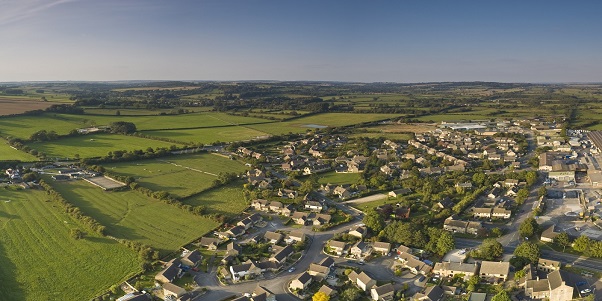11th December 2018
Phillip Hammond’s Autumn Budget on 29th October 2018 has strengthened the Government’s commitment to growth in the Oxford to Cambridge corridor, which is also now referred to as the ‘Brain Belt’.
Following The National Infrastructure Commission’s (NIC) report published last November which called for one million new homes, together with new road and rail links in the growth corridor area, the Treasury has published a response which sets out the Government’s intentions for the next 12 months as follows:
• Consult in early 2019 on route options for East West Rail Central section (Bedford to Cambridge)
• Continue with the delivery of the enabling works on the East West Rail Western section (Bicester to Bedford)
• Consult on route options for the Oxford to Cambridge Expressway in late 2019
• Publish an ambitious, corridor-wide Joint Vision Statement to 2050 with local partners by spring 2019 looking to co-ordinate investment in housing, infrastructure and the environment, as well as considering local natural capital
• Appoint an independent business Chair for the arc
• Appoint a Ministerial Champion for the arc to provide further focus and facilitate coordination across Whitehall
• Complete the analysis to understand housing growth scenarios and the associated infrastructure requirement.
The Autumn Budget comes after the Housing Minister, Kit Malthouse, invited local authorities in the arc area to submit ambitious housing growth proposals by 14th September. This process was undertaken to gauge the appetite for growth rather than requesting specific locations and proposals for new settlements and developments. Of the 26 local authorities located in the growth corridor, 14 authorities expressed an interest.
The specific authorities who responded have not been named by the Housing Minister. However, one council which has been open about its interest is Milton Keynes Council. They have expressed plans to grow Milton Keynes to become a city of 500,000 by 2050. This would require the delivery of 100,000 new homes which is significantly higher than the scale of growth (26,400 dwellings) planned for in the draft Plan:MK. Therefore, future Local Plans will be required to allocate significantly more land for both housing and employment if the target is to be reached by 2050.
The NIC’s Partnering Prosperity report sets out that through a robust and transparent process, locations for new and expanded settlements could be designated by 2020. To do so, formal studies would need to be commissioned to identify and assess options for new settlements, along with consultation with communities, stakeholders and a public examination of proposed sites.
To coincide with the Autumn Budget, the final report from Sir Oliver Letwin MP on the build out rates of residential development sites was published. The report concludes that the homogeneity of the types and tenures of the homes on offer on the largest sites (1,500 and over) in areas of high housing demand and the absorption rates of these products are the fundamental drivers of the slow rate of build out. The report suggests a new set of planning rules specifically designed to apply to all future large sites to provide a diversity of offerings. Sir Letwin further suggests that to ensure a reasonable balance is struck between promoting the public interest through increased diversity and faster build out rates on the one hand, and proper recognition of the value of the land on the other hand, the Housing Secretary should guide local planning authorities towards insisting on levels of diversity that will tend to cap residual land values for these large sites at £100,000 per acre or around ten times their existing use value. This view hints at the widely discussed ‘land value capture tax’ to enable additional land value to be used for delivery of infrastructure. We will continue to monitor the Government’s response to the final report.
Dates to look ahead to include the full Treasury response to the NIC report in early 2019, the corridor-wide Joint Vision Statement expected in spring 2019, draft Transport Strategy for the corridor from England’s Economic Heartland due to be published in summer 2019 and the announcement of the preferred Expressway route in autumn 2020.
Robinson & Hall’s offices in Bedford and Buckingham enjoy central locations within the growth corridor and are therefore well placed to advise landowners on the development opportunities offered by this large project. We are currently looking at numerous sites for clients and are regularly receiving new approaches from developers looking at additional sites.
To discuss any of these points or for further information, please contact Andrew Barr, Partner and Head of Planning & Development on 01234 362926 or David Jones, Partner and Head of Agency on 01234 362906.




![The Bedford College Group logo [WHITE]](https://www.chamber-business.com/hs-fs/hubfs/The%20Bedford%20College%20Group%20logo%20%5BWHITE%5D.png?width=139&height=81&name=The%20Bedford%20College%20Group%20logo%20%5BWHITE%5D.png)
